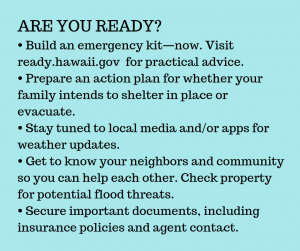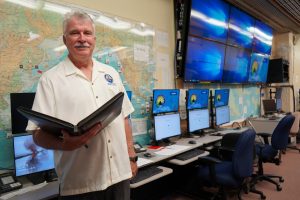HI-EMA urges residents to prepare, stay vigilant
Posted on Jul 29, 2019 in Capitol Connection, FeaturedWe’ve all heard the advice about two-week supply kits, family emergency plans and prepping for possible hurricane damage. But how many of us are taking the advice seriously? As the head of Hawai‘i’s Emergency Management Agency, Tom Travis worries about that as much as the next hurricane or tsunami alert.
“The foundation on which emergency management is built is the local community,” he said. “The stronger you can make your community, the better it is for everyone.” Travis knows this first-hand — from his years of living in Kapoho on Hawai‘i island and from his military and civilian experience as a former national security analyst, including working on the federal government response to Hurricane Katrina.

At least with hurricanes, Travis said HI-EMA can track storms five days out. However, his “worst case scenario” would have been if Hurricane Lane had made a direct hit on O‘ahu. “It would have disabled most of the state,” Travis said. “We’re not Puerto Rico because we have a stronger community, infrastructure and a governor ready to take charge. But we’re still a chain of islands, 2,500 miles from the nearest port, and only one port on O‘ahu.” Travis also warned, “A tsunami could be even more deadly because we would get very little warning — nine hours at most,” he said. “It would be like the tsunami that hit Hilo in 1960 after the earthquake in Chile. Fortunately, the Pacific Tsunami Warning Center can evaluate almost immediately the level of threat.”
For someone who could be living a life of leisure on the mainland, why did Travis decide to take on what is arguably one of the most stressful jobs in the state? “You work hard because you want to do the right thing,” he said. “It’s actually wonderful to have the opportunity to serve. For my wife and me, Hawai‘i is home. I’ve lived here longer than anywhere else in the world. I just adore Hawai‘i,” he said pausing with a smile. . . “for the people, not the traffic.”
